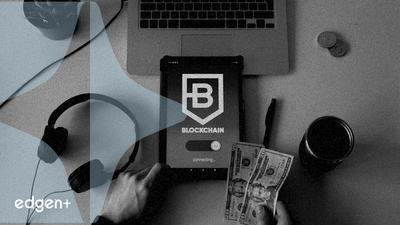Related News

Cash App to Integrate Stablecoin Transactions by Early 2026, Utilizing Solana
## Executive Summary Block's **Cash App** will enable eligible users to send and receive stablecoins, with **USD Coin (USDC)** payments powered by **Solana**, by early 2026. This expansion aims to integrate digital assets further into its mobile platform, impacting its 57 million monthly users. ## The Event in Detail **Cash App**, a financial platform operated by **Block (SQ)**, has announced plans to implement stablecoin transaction capabilities for its users. This feature, expected to roll out in early 2026, will allow customers to send and receive stablecoins, with an initial focus on **USD Coin (USDC)**. The functionality will leverage the **Solana (SOL)** blockchain to facilitate these transactions. A spokesperson for the company indicated that the new feature would support multiple stablecoins and networks upon its availability. This development follows Cash App's earlier integration of **Bitcoin (BTC)** Lightning Network payments in November, allowing users to spend Bitcoin with automatic USD conversion. ## Financial Mechanics The forthcoming stablecoin system within Cash App is designed for seamless integration with traditional fiat currencies. Each Cash App account will be assigned a unique blockchain address, enabling direct interaction with the Solana network. When stablecoins are received on-chain, they will be automatically converted into U.S. dollars within the user's app balance. Conversely, funds sent from a user's USD balance to the blockchain will be converted into stablecoins for transfer. This mechanism allows Cash App to function as an intermediary, effectively treating stablecoins like any other supported currency, thereby simplifying the user experience and abstracting the underlying blockchain complexities. Regulatory approval remains a prerequisite for the full implementation of these features. ## Business Strategy & Market Positioning This strategic move by **Block**, under the leadership of Jack Dorsey, signifies a deepening commitment to integrating cryptocurrency solutions into mainstream financial services. With 57 million monthly users, Cash App's adoption of stablecoin transactions positions it as a significant catalyst for broader digital asset acceptance. The decision to utilize the **Solana** blockchain underscores a strategic choice for a high-throughput, low-cost network capable of supporting large-scale payment operations. This approach aligns with broader trends where PayTech companies are integrating stablecoin wallets and APIs to bridge traditional banking with blockchain technology, enhancing interoperability and user accessibility. ## Broader Market Implications The integration of stablecoins, particularly **USDC**, into a widely used platform like Cash App is expected to have substantial implications for the broader cryptocurrency market and the Web3 ecosystem. It provides a significant avenue for increased stablecoin utility, moving beyond speculative trading to practical, everyday transactions. This development could foster greater confidence among retail users and businesses in the stability and reliability of digital assets as a medium of exchange. Furthermore, the partnership highlights the growing importance of efficient blockchain infrastructures, such as **Solana**, in supporting mainstream financial applications, potentially driving further innovation and adoption across the fintech sector.

MoonPay Debuts Enterprise Stablecoin Suite with M0 Integration, Appoints Former Paxos Executives
## Executive Summary **MoonPay**, a prominent crypto payments firm, has officially launched its enterprise stablecoin business, marking a significant expansion into full-stack stablecoin infrastructure. This new offering, integrated with **M0**, an open infrastructure provider, enables enterprises to issue and manage fully reserved digital dollars across various blockchains. The initiative is bolstered by the appointment of **Zach Kwartler** as Head of Stablecoins and **Derek Yu** as Treasurer, both bringing extensive experience from **Paxos**. This strategic move positions MoonPay to deepen its foothold in the rapidly evolving digital asset landscape, catering to a growing demand for compliant and interoperable stablecoin solutions among corporate clients. ## The Event in Detail MoonPay's newly launched enterprise stablecoin suite is designed to provide businesses with a comprehensive solution for deploying customized and interoperable stablecoins. The integration with **M0** facilitates the issuance and management of fully reserved digital dollars across multiple blockchain networks. This offering spans the entire value chain of stablecoin operations, encompassing issuance, on-ramps, swaps, and payments, a capability enhanced by MoonPay's previous acquisition of **Iron**. The company intends to target enterprise partners across key global markets, including the **United States**, **Asia**, and **Latin America**. Stablecoins issued through MoonPay's platform will be accessible via its global distribution network, supporting features such as buy, sell, swap, deposit, and checkout products. Leadership for this new venture includes **Zach Kwartler**, who assumes the role of Head of Stablecoins. Kwartler previously served at **Paxos**, where he was instrumental in developing and scaling white-label stablecoin and crypto infrastructure products for platforms including **PayPal**, **Interactive Brokers**, and **Mercado Libre**. Additionally, **Derek Yu**, also formerly of Paxos, has joined MoonPay as Treasurer, overseeing cash, liquidity, and stablecoin operations. Yu brings over a decade of experience in audit and treasury functions to his new role. ## Market Implications MoonPay's entry into the enterprise stablecoin market signals an intensification of competition within the stablecoin infrastructure sector. By offering a full-stack solution, MoonPay aims to become a crucial infrastructure partner for enterprises, fintechs, wallets, and payment service providers seeking to integrate stablecoin functionality into their core operations. This strategic pivot reflects a broader industry trend towards enterprise adoption of digital assets and the increasing demand for robust, compliant, and scalable stablecoin solutions. The focus on customizable and interoperable digital dollars addresses critical needs for businesses operating across diverse blockchain ecosystems. The appointments of seasoned professionals from Paxos underscore MoonPay's commitment to building a compliant and secure offering, potentially raising the bar for competitors in the space. ## Broader Context The expansion by MoonPay into enterprise stablecoins aligns with the growing institutional interest in leveraging blockchain technology for enhanced financial operations. Stablecoins, backed by traditional assets and designed for price stability, are increasingly viewed as foundational elements for the future of digital payments and Web3 commerce. This move by MoonPay also occurs amidst a maturing regulatory environment for stablecoins, with discussions and frameworks such as **MiCA rules** in the EU emphasizing requirements for full asset backing, regular audits, and robust **Know-Your-Customer (KYC)** and **Anti-Money Laundering (AML)** compliance. By providing comprehensive infrastructure, MoonPay is positioning itself to capitalize on this evolving landscape, facilitating wider corporate adoption of digital currencies and contributing to the integration of blockchain into mainstream financial systems.

Wrapped Bitcoin Launches on Hedera, Integrating BTC into DeFi Ecosystem
## Executive Summary Wrapped Bitcoin (WBTC) has officially launched on the Hedera network, a development set to integrate the leading tokenized form of Bitcoin into Hedera’s expanding decentralized finance (DeFi) ecosystem. This strategic move, supported by collaborations with Hedera Council member **BitGo**, **BiT Global**, and **LayerZero**, aims to unlock substantial Bitcoin liquidity for participation in DeFi protocols, including lending, trading, and liquidity provision, without requiring holders to relinquish their underlying Bitcoin exposure. Each WBTC on Hedera is fully backed 1:1 with Bitcoin held in BiT Global’s secure custody, ensuring transparent verifiability. ## The Event in Detail The Hedera Foundation announced the successful integration of **WBTC**, marking a significant milestone for both the Hedera network and the broader Bitcoin DeFi (**BTCFi**) landscape. This integration makes canonical WBTC accessible within Hedera’s institutional-grade environment. With over 126,000 BTC in custody and an approximate $13 billion market capitalization, WBTC represents the industry benchmark for tokenized Bitcoin. James Hodgkins, Chief Growth Officer at **HBAR**, Inc., highlighted that this launch, available via **Stargate Finance**, enables a vast amount of previously idle Bitcoin liquidity to engage with Hedera’s DeFi offerings. The Hedera network is characterized by its low-fee structure and absence of frontrunning or miner-extractable value (MEV), providing a secure environment for BTC holders. ## Market Implications The introduction of WBTC to Hedera is anticipated to bring additional liquidity to the network, which has demonstrated significant growth in its DeFi segment. In Q3 2025, Hedera’s **Total Value Locked (TVL)** experienced a 53.4% increase, reaching $113.5 million. Concurrently, decentralized exchange (DEX) volumes nearly doubled, and the **HBAR** token’s market capitalization surged by 43% to $9.1 billion, with its price climbing 43.2% to $0.21. The enhanced liquidity provided by WBTC is expected to further bolster these metrics, attracting more developers and users to the platform. This development positions Hedera as a more robust platform for various DeFi applications, including lending, trading, and yield generation, leveraging the security and ubiquity of Bitcoin. ## Business Strategy & Market Positioning Hedera’s strategy with this integration is to enhance its appeal as a robust platform for enterprise-grade DeFi solutions. By collaborating with established entities like **BitGo**, a primary custodian for WBTC, **BiT Global** for custody, and **LayerZero** for interoperability, Hedera is leveraging trusted infrastructure to expand its capabilities. This move aligns with Hedera’s broader efforts to bolster its DeFi ecosystem through technical enhancements, enterprise integrations, and increased institutional support, with planned upgrades in 2025 focusing on improved **EVM** compatibility and smart contract capabilities. The objective is to attract a new class of liquidity and provide developers with institutional-grade Bitcoin access within Hedera’s DeFi applications. This strategic expansion mirrors a broader industry trend where various blockchain networks seek to integrate Bitcoin’s substantial market capitalization into their DeFi ecosystems, allowing **BTC** holders to generate yield and participate in decentralized applications without selling their primary asset. ## Broader Context The expansion of **WBTC** to Hedera underscores a continuing trend of integrating Bitcoin with diverse decentralized finance platforms. This development allows **Bitcoin** holders to participate actively in the DeFi ecosystem, thereby increasing Bitcoin’s utility beyond its traditional role as a store of value. Simon Baksys, Vice President of Business Development at LayerZero, stated that WBTC on Hedera represents a key milestone in making Bitcoin truly borderless. The move is expected to foster further innovation in **BTCFi**, potentially driving increased adoption of both tokenized Bitcoin solutions and the Hedera network itself. As institutions demonstrate growing interest in the digital asset space, evidenced by increased institutional interest in **HBAR ETFs**, the seamless integration of established assets like Bitcoin into evolving DeFi ecosystems becomes crucial for market maturity and expansion.
